PROGRAM PUBLICATIONS
See something of interest? Complete a publication request to order a digital or hard copy.
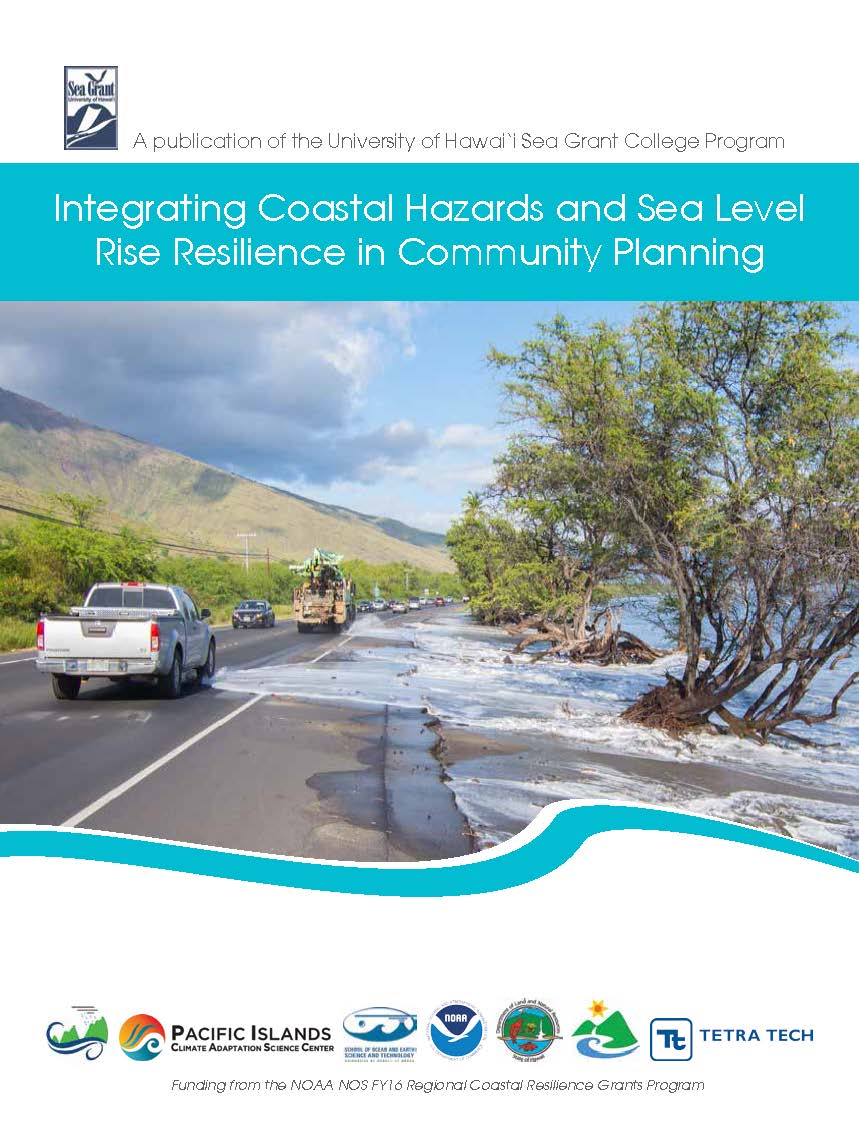
Integrating Coastal Hazards and Sea Level Rise Resilience in Community Planning
Over the past decade, Hawai‘i has progressed in recognizing and addressing coastal hazards and the need for adaptation to sea level rise. However, more work still needs to be done to translate broad-scale guidelines and scientific information into action at the local level. This project focuses on developing practical guidelines for incorporating resilience to coastal hazards and sea level rise into county general plans and community plans. In the context of this project, resilience is a community’s ability to adapt and thrive in the face of increasing coastal hazards, climate change impacts, and sea level rise through proactive planning utilizing
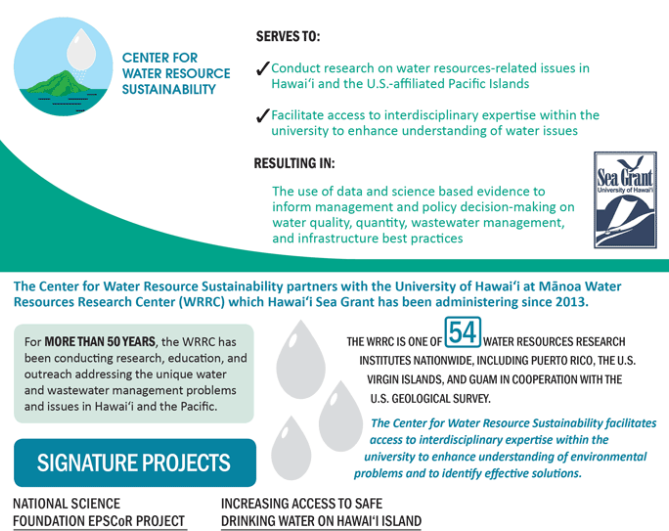
Center for Water Resource Sustainability Infographic
Water Resource Sustainability is dedicated to conducting research on water resources-related issues in Hawai‘i and the U.S.-affiliated Pacific Islands and facilitating access to interdisciplinary expertise within the university to enhance understanding of water issues. The use of data and science based evidence informs management and policy decision-making on water quality, quantity, wastewater management, and infrastructure best practices.

Economic Impact Analysis of the Potential Erosion of Waikīkī Beach
This report provides an update to a 2008 report on the value of Waikīkī Beach using 2016 economic and visitor arrival data. Hospitality Advisor’s 2008 report concludes that just under $2 billion (2007 U.S. dollars) in overall visitor expenditures could be lost annually due to a complete erosion of Waikīkī Beach. The 2008 report investigated the economic impact of the erosion of Waikīkī Beach through visitor surveys and analysis of data provided by the Hawai‘i Department of Business, Economic Development and Tourism, Hawai‘i Tourism Authority, and Smith Travel Research. This report updates the economic impact estimates with the most recent

Climate Change Impacts in Hawaii
The University of Hawai‘i Sea Grant College Program prepared this climate change impacts report to provide Hawai‘i communities with a foundational understanding of the effects of global climate change on Hawai‘i’s resources and ecosystems. The report presents a summary of the current state of scientific knowledge regarding climate change and how it is expected to affect Hawai‘i, including marine, coastal, terrestrial, and freshwater ecosystems, built systems, and human health so that Hawai‘i can be better prepared for the changes to come.

Center for Coastal & Climate Science & Resilience
The Center Serves To: Support research in coastal and climate sciences and promote access to the best available science for decision makers Increase coastal community resilience to natural hazards and adaptation to climate change Improve conservation and management of coastal resources Resulting In: Resilient coastal communities that are better prepared for the impacts of natural hazards and climate change Signature Projects Hawai‘i Climate Adaptation Initiative: Hawai‘i Sea Grant is supporting the development of Hawai‘i’s first Sea-Level Rise Vulnerability and Adaptation Report released in December 2017. Sea level has risen over the last century on each island at rates varying from
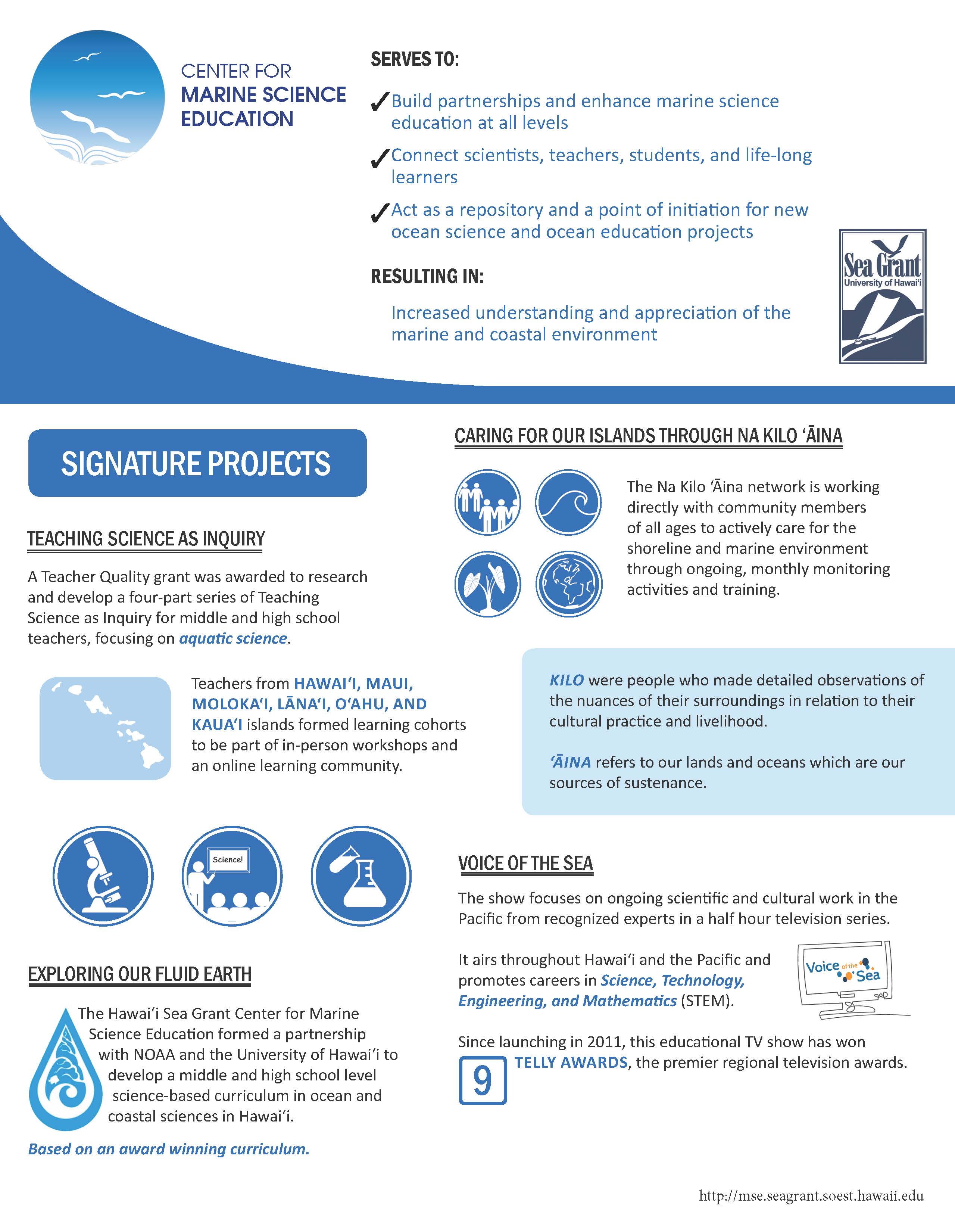
Center for Marine Science Education Infographic
The Center Serves To: Build partnerships and enhance marine science education at all levels Connect scientists, teachers, students, and life-long learners Act as a repository and a point of initiation for new ocean science and ocean education projects Resulting In: Increased understanding and appreciation of the marine and coastal environment Signature Projects Teaching Science as Inquiry : A Teacher Quality grant was awarded to research and develop a four-part series of Teaching Science as Inquiry for middle and high school teachers, focusing on aquatic science. Teachers from Hawai‘i, Maui, Moloka‘i, LĀna‘i, O‘ahu, and Kaua‘i islands formed learning cohorts to be
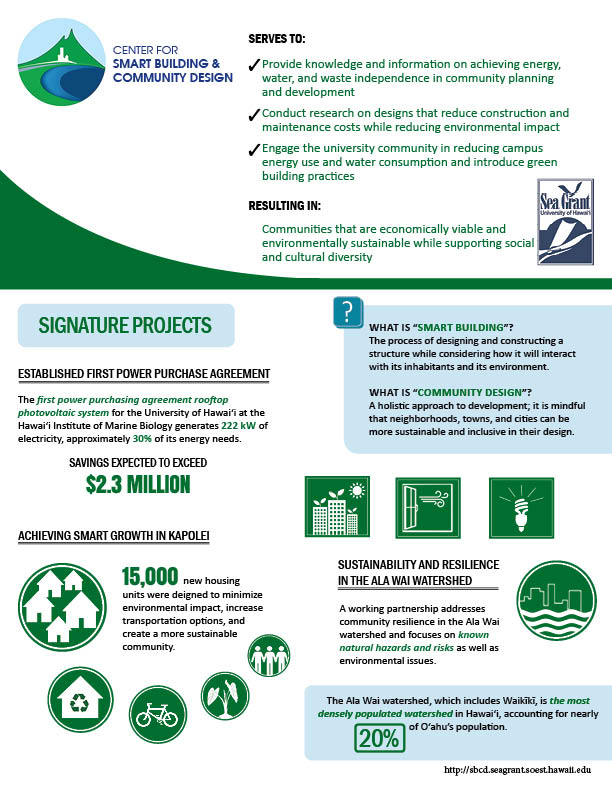
Center for Smart Building & Community Design Infographic
The Center Serves To: Provide knowledge and information on achieving energy, water, and waste independence in community planning and development Conduct research on designs that reduce construction and maintenance costs while reducing environmental impact Engage the university community in reducing campus energy use and water consumption and introduce green building practices Resulting In: Communities that are economically viable and environmentally sustainable while supporting social and cultural diversity Signature Projects Established First Power Purchase Agreement: The first power purchasing agreement rooftop photovoltaic system for the University of Hawai‘i at the Hawai‘i Institute of Marine Biology generates 222 kW of electricity, approximately

Snorkeler’s Guide to the Fishes of Hanauma Bay
This 65 page waterproof fish guide provides full color photographs, names, and descriptions of the fishes most commonly viewed by snorkelers and swimmers at Hanauma Bay. ORDER INFORMATION Snorkeler's Guide to the Fishes of Hanauma Bay $12.95 To order your copy of Snorkeler's Guide to the Fishes of Hanauma Bay, please contact us at uhsgcomm@hawaii.edu or (808) 956-7410.
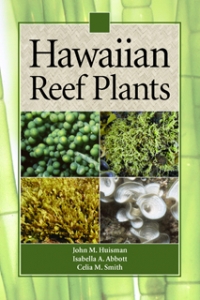
Hawaiian Reef Plants
The University of Hawai‘i Sea Grant College Program is pleased to present Hawaiian Reef Plants. The book is written by John M. Huisman, Isabella A. Abbott and Celia M. Smith, three of the world’s leading botanists, and is in full color. Its 264 pages are packed with stunning photographs of the Hawaiian marine flora, plus keys, descriptions, introductory chapters, sections on Hawaiian use of seaweeds and much more. This volume concentrates on a significant part of Hawaiian marine life – marine plants, or seaweeds. Hawaiian culture was and is heavily dependent upon the sea, and reef algae or “limu” as

Reef and Shore Fishes of the Hawaiian Islands
The University of Hawai‘i Sea Grant College Program is proud to present Reef and Shore Fishes of the Hawaiian Islands by award-winning author John E. Randall. The 560-page volume covers the 612 species of fishes found in the Hawaiian Archipelago from the shore to 200 meters depth. It contains 1007 illustrations (944 in color) most of which are the author’s underwater photographs. Dr. Randall regards this as his finest publication, the result of 47 years of study of the Hawaiian fish fauna. Whether you are a seasoned ichthyologist, a beginning snorkeler, or simply someone with an interest in Hawai‘i’s varied
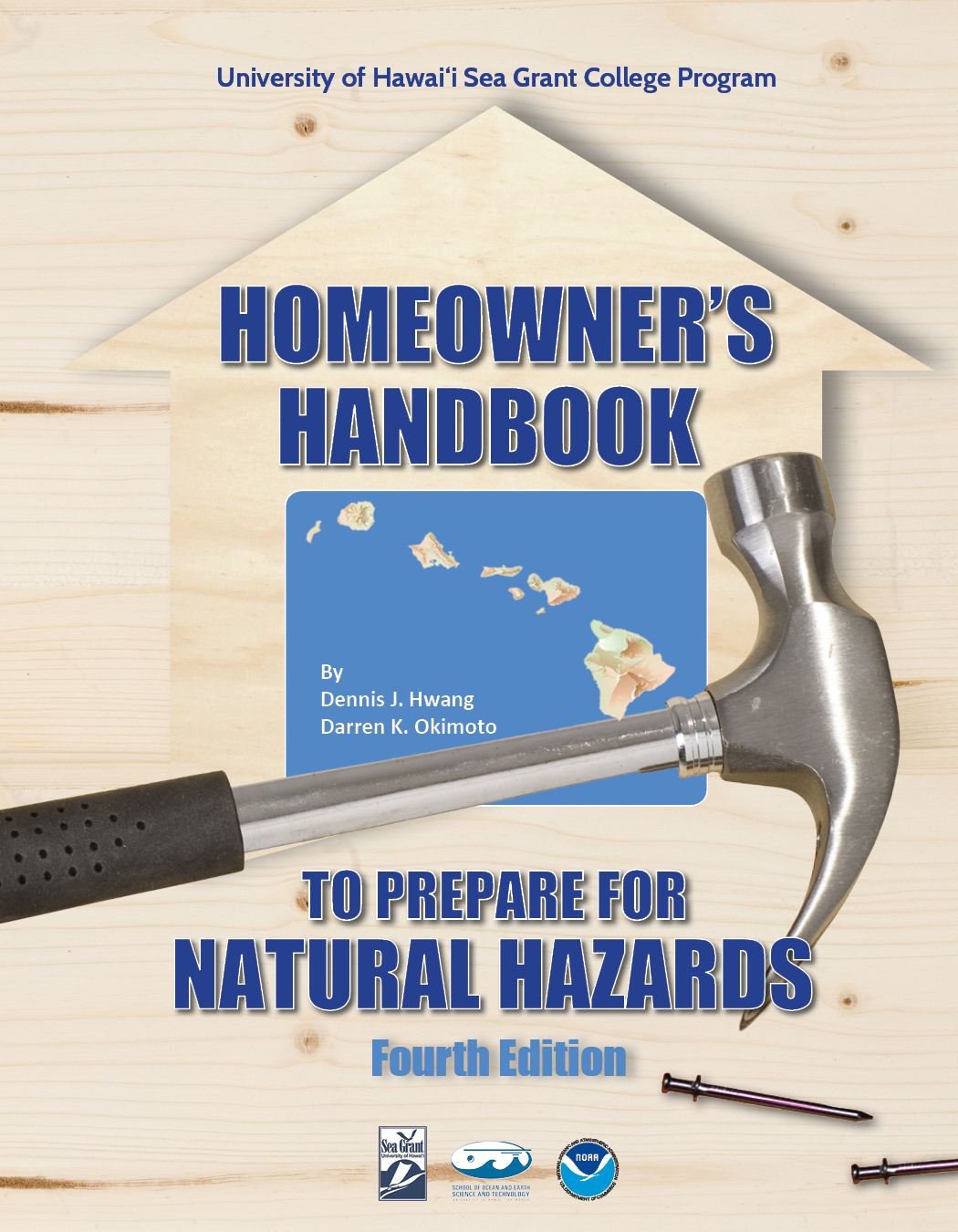
Homeowner’s Handbook to Prepare for Natural Hazards
What’s New in 4.0 Evacuation Planning – New resources, summarized in Tables can help families create their emergency and evacuation plans. Table 3-5 summarizes this Part of the book and provides interactive links for: (i) tsunami evacuation maps important for tsunami evacuation planning; and (ii) flood, storm surge and wind topographic speed up maps, important for hurricane evacuation planning. The maps for hurricane evacuation planning should be used with the shelter in place table with instructions (Table 3-4). Note for most evacuation scenarios, wait for specific instructions from emergency management or civil defense before evacuating as there will be warning
Ka Pili Kai Fall 2016
Center of Excellence: Coastal and Climate Science and Resilience Center of Excellence: Marine Science Education Center of Excellence: Smart Building and Community Design Center of Excellence: Sustainable Coastal Tourism Institute of Hawaiian Language Research and Translation To address the needs, challenges, and opportunities of coastal communities and further the goals of the NOAA National Sea Grant College Program, the University of Hawai‘i Sea Grant College Program (Hawai‘i Sea Grant) has established five centers of excellence to facilitate the delivery of research, education, and extension services. The primary role of each center is to foster the development of robust, resilient, economically
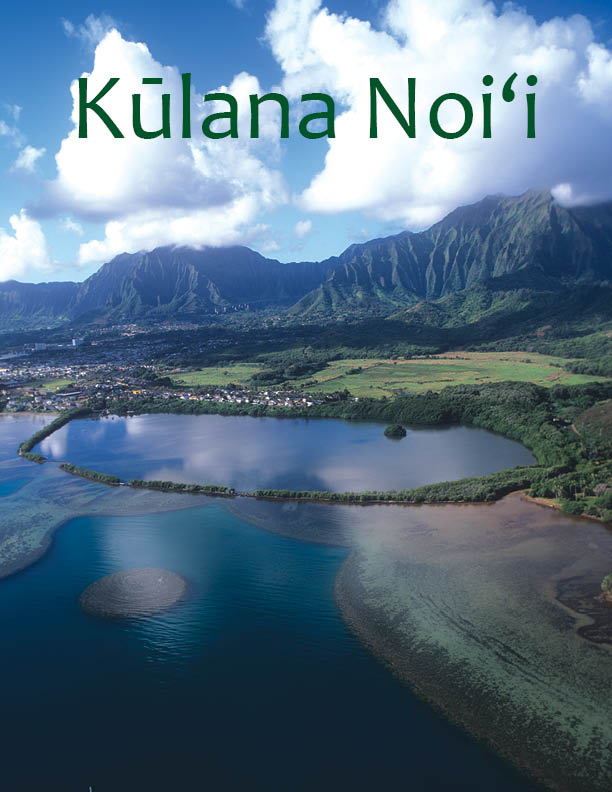
Kūlana Noiʻi
Place-based stewards in the Heʻeia ahupuaʻa expressed a need for a set of guidelines to help ensure that research projects focused in Heʻeia engage in equitable and reciprocal partnership with those connected to and caring for the ahupuaʻa. In response to this need, a partnership was formed between the University of Hawai‘i Sea Grant College Program, Kuaʻāina Ulu ʻAuamo (KUA), and others to develop the Kūlana Noi‘i. The Kūlana Noi‘i is not intended to be a compliance standard or checklist for achieving reciprocal community-research partnership. Instead, this document serves as a starting point for deeper conversation and lays out a set of ideas, values, and
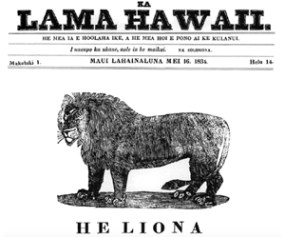
Hurricane with A History
Hawaiian Newspapers Illuminate an 1871 Storm How 114 years of Hawaiian-language newspapers starting in 1834 extend our knowledge of natural disasters into the nineteenth century and to precontact times.

Hawaii Sea Grant Strategic Plan 2018-2023
The University of Hawai‘i Sea Grant College Program (Hawai‘i Sea Grant) conducts an innovative program of research, outreach, and education services toward the improved understanding and stewardship of coastal and marine resources of the state, region, and nation. Through these activities we serve those who live, work, and recreate in coastal communities in Hawai‘i and the Pacific Region. Hawai‘i Sea Grant is one of 34 Sea Grant College Programs nationwide that comprise a network within our nation’s coastal and Great Lakes universities and colleges, promoting unbiased, evidenced-based understanding, conservation, and sustainable use of marine and coastal resources. As an organized

Hawaii Sea Grant By the Numbers
Hawai‘i Sea Grant provides integrated research, extension, and education activities that increase understanding and wise stewardship of Hawaiʻi’s coastal and marine resources. The numbers below represent some of the ways that we impacted coastal communities in 2016 alone. $5 million in leveraged funds, resulting in a return on the federal investment of approximately 200% Hawai‘i Sea Grant created or sustained 49 jobs for an economic benefit of at least $3.6 million 783 Fishers who modified their practices as a result of Hawai‘i Sea Grant activities 12,099 Volunteer hours completed 34 Graduate students and fellows supported 23 Undergraduate students supported 33
IN THIS SECTION
Hawaiʻi Sea Grant Resources

